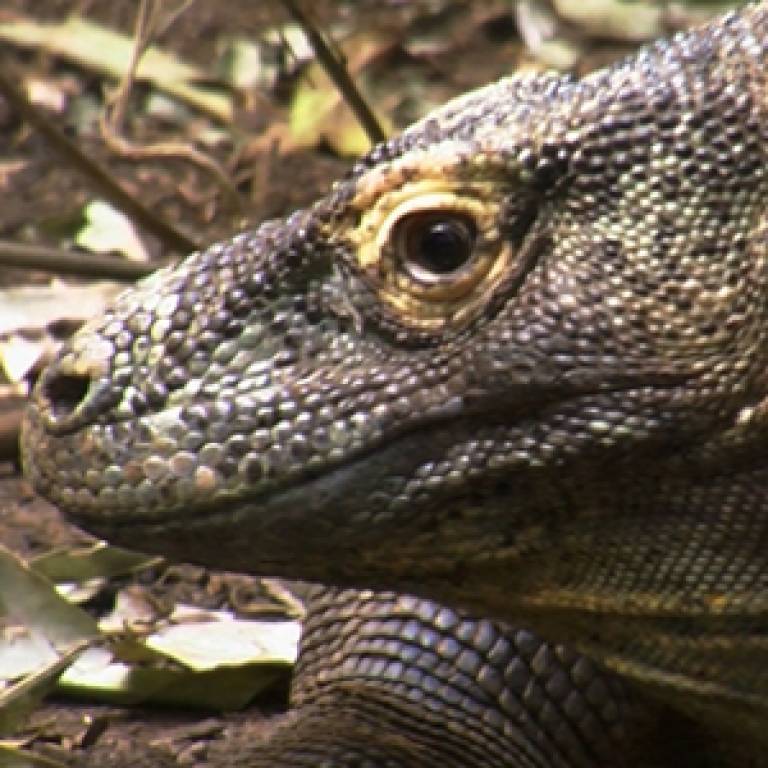Video: students help dragon find place in the sun
15 October 2009
Students from UCL are playing a key part in monitoring the health of one of London Zoo's star attractions - Raja the Komodo dragon.

Links:
- Watch the video in high definition on UCL's YouTube channel
- UCL Electronic & Electrical Engineering
- London Zoo
The Komodo dragon is the world's largest living species of lizard and grows to an average size of between two and three metres long.
The fearsome-looking creatures, found only on the Indonesian islands of Komodo, Western Flores, Rinca and Padar, need regular exposure to sunlight.
They rely on the ultraviolet rays (UVB) in sunlight to help them produce vitamin D3, which is needed to grow and maintain healthy bones and produce eggs.
Raja, who is 11 years old, two metres long and weighs 52kg, is a big favourite of visitors at London Zoo.
Three students from UCL Electronic & Electrical Engineering have created a prototype of a data logger that measures Raja's level of exposure to UVB.
Dr Cyril Renaud, who has been supervising the project, said: "This monitoring device means we can measure his UVB intake and, by taking blood samples, find out how much vitamin D the dragon is producing in comparison. It lets us know whether the dragon is healthy and work out how much UVB exposure he needs in captivity."
The prototype logs two sets of data on an SD card - a type of Flash memory widely used in digital cameras, camcorders and mobile phones.
It uses two detectors to record the UV index and the UV power throughout the day, which allows Raja's keepers to calculate his daily and weekly exposure.
Dr Ian Stephen, London Zoo's Assistant Curator of Herpetology, said: "The potential impact of this device on Komodo dragon survival could be massive - especially in terms of the captive population because we stand to learn a lot. At the moment, it's all right saying 'we need another 'x' amount of UV lamps in the roof, but it's just guesswork. That's the same for all reptiles."
Raja, who eats more than 100kg of meat a year, will wear the data logger for long periods of time, so it has been designed to consume minimal power. Future prototypes may include wireless transmission of data and the use of solar panels, as more UCL students are continuing the development of the prototype.
Dr Renaud added: "This shows how UCL is using its knowledge within the London community and across the country to develop new technology and new devices that can have a positive impact."
For more information follow the links above.
Images: video, top right, Dr Renaud and Dr Stephen explain the project; picture, bottom left, Raja the Komodo dragon
UCL context
UCL Electronic & Electrical Engineering has received one of the top two ratings in every UK Research Assessment Exercise (RAE) carried out to date. It is also the highest RAE-rated Electronic Engineering department in London. The department is a major contributor to the London Centre for Nanotechnology; it was one of the first Electronic Engineering departments in the UK to introduce problem-based learning into its undergraduate courses; and it is offers new undergraduate MEng and postgraduate MSc programmes in Electronic Engineering with Nanotechnology as well as a new MSc in Internet Engineering.
Related stories:
Nanoscale research uses spin to revolutionise how computers work
New centre sheds light on science of photonics
 Close
Close

